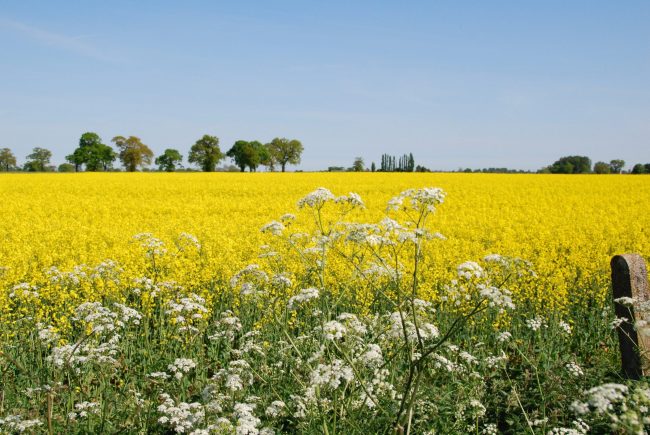Plants feel the heat.

Climate change is upon us. Heatwaves are becoming more common, resulting in drought and fires, which we have seen in many parts of the world in recent years. The effect of high temperature on animals [and us] is that the heat pushes the organism beyond its ability to regulate its body temperature, so it loses water and its systems fail.
Of course, there are some plants and animals that can survive in extreme temperatures, the cacti and some lizards of the deserts being examples. The plants have, in most cases, reduced their leaves down to spines and reduced their surface area in other ways. They also tend to have thick waxy cuticles to reduce the loss of water by transpiration.
Apart from causing increased water loss, heat has other effects on plants. Recent research at the University of California investigated how a ‘heat wave’ affects oil seed rape - Brassica napus. Nick Rosenberger and colleagues grew the plants first in greenhouses and then moved them to chambers kept at two different temperatures. One group experienced a temperature of 25oC, whilst the others were exposed to a temperature of 35oC. The plants were kept at these temperatures for 72 hours after which they were moved back to the greenhouses. The research team then studied the effects of temperature on the reproductive process. 
Reproduction is a complex process, it involves the formation of reproductive structures from petals, through to stamens, ovaries, stigmas not to mention the process of meiosis by which the pollen and ovules are formed. These processes are vulnerable to external environmental factors.
The research time found that :-
- The higher temperature of 35oC reduced pollen formation. The anthers produced significantly less pollen compared to the plants that experienced 25oC.
- The higher temperature affected the development of the pollen tubes. The structure by which the pollen grain nucleus makes its journey down to the ovule.
- The number of seeds produced after exposure to heat was reduced substantially by over 80%.
So heat exposure substantially reduced reproductive success, which is important consideration in terms of crop yield, and indeed the continued existence of the species. Heat waves may have the effect of reducing food security, genetic diversity and, indeed, biodiversity.
Curious fact : The root systems of mature creosote plants (which grow in Death Valley) are so efficient at absorbing water that nearby seeds cannot get enough water to germinate, this effectively creates ‘dead zones’ around each plant.
Comments are closed for this post.
